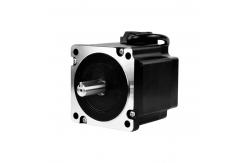86HS304 2 Phase Hybrid Stepper Motor
|
|
1. Products Overview Step motor is a motor that converts the electrical pulse signal into the corresponding angle displacement. For each of the pulse signal, the rotor rotates a certain angle accordingly, and the speed is proportional to the input pulses’ frequency. Therefore, step motor is also called pulse motor. The biggest difference between step motor compared to other control motors is that it receives digital control signals (pulses) and converts into angle displacement accordingly. Enter a pulse signal to get a specified position increment. Compared with the traditional DC control system, such a so-called incremental position control system, the stepper system complexity and cost are significantly reduced. The angular displacement of the stepping motor is strictly proportional to the number of input pulse, and it is synchronized with the pulse in time. Therefore, by controlling the pulse frequency and pulse quantity, the motor shaft speed, and position can be controlled precisely too. At the same time, Kaifull has solved many problems of traditional stepper drivers buy the latest patented technologies. There are many middle and high end customers globally, and they highly appreciate our stepper motor and drives very much.
Although the stepper motor and its control technology are currently very mature, if not used properly, there may still be a situation of step loss, that is, position error etc. Here, we will analyze some problems and solutions. Losing pulses when changing direction leads to inaccurate positioning When changing direction, the pulse is lost, which means that it is accurate in any direction, but as soon as the direction is changed, errors accumulate, and the more times it is changed, the more biased it is. Solution: Generally, stepper drivers have certain requirements for direction and pulse signals. For example, the direction signal is determined a few microseconds before the first rising or falling edge of the pulse (different drivers have different requirements) arrives. Otherwise, there will be a pulse that runs in the opposite direction of the actual required direction. Finally, the problem will appear as it deviates more and more, with smaller subdivisions becoming more prominent. The main solution is to use software to change the logic of the pulse or add a delay. The initial speed is too high and the acceleration is too large, which sometimes causes stepping loss. Solution: Due to the characteristics of the stepper motor, the initial speed should not be too high, especially when the load inertia is large. It is recommended to have the initial speed below 1r/s, so that the impact is small. If the same acceleration is too large, it will also have a large impact on the system, which is simple overshoot Insufficient motor output torque Solution: Increase the motor current appropriately, increase the voltage of the progressive driver (pay attention to the optional driver), and choose a motor with higher torque. Environmental electromagnetic interference causes mis-operation of the controller or driver, resulting in inaccurate positioning. It is necessary to identify the source of disturbance and reduce its electromagnetic interference on the stepper system, such as increasing spatial distance, using shielded wires for signal lines, and ensuring good grounding of the controller or driver to block communication channels and improve its anti-interference ability. Solutions:
Target Applications of Kaifull PRMCAS Hybrid Stepper Motors The application of stepper motors Mainly used in industries, aerospace, robotics, precision measurement and other fields, such as optoelectronic theodolites for tracking satellites, military instruments, communication and radar equipment, the widespread application of subdivision drive technology makes the phase number of motors not limited by step angle, bringing convenience to product design. At present, in the subdivision drive technology of stepper motors, chopping constant current drive, instrument pulse width modulation drive, and current vector constant amplitude uniform rotation drive control are adopted, greatly improving the operating accuracy of stepper motors and promoting the development of stepper motors in the direction of high-speed and precision in medium and low-power applications. Kaifull hybrid stepper motors are currently widely used in various automation equipment and instruments such as engraving machines, laser machines, CNC machine tools, textile and clothing machinery, medical equipment, measuring equipment, electronic processing equipment, packaging machinery equipment, etc. In the field of robotics In the field of robotics, stepper motors are widely used to control the motion and direction of robot arms. By sending pulse signals on the motor, the robot can easily and accurately pick up or place items. Printing assembly In the printing and assembly industry, stepper motors achieve high-quality printing and assembly by controlling the movement of rollers, discs, and other moving parts on the printing machine. Medical devices In the field of medical devices, stepper motors are used to control the automated positioning and movement of surgical robots and medical equipment. 3D printing In 3D printing technology, stepper motors can achieve complex 3D structures and shapes by controlling the movement of the print head. Industrial automation In the field of industrial automation, stepper motors are widely used in the control of various equipment, such as engraving machines, laser machines, CNC machine tools, textile and clothing machinery, medical equipment, measuring equipment, electronic processing equipment, packaging machinery and other automation equipment and instruments. In summary, stepper motors have become an indispensable component in various application fields, helping various devices and machines complete complex actions through their stable motion and precise control.
2. Hybrid Stepper Motor General Technical Specifications
3. Hybrid Stepper motor Performance Datasheet
4. Mechanical Dimensions (in mm)
5. Wiring Diagram
6. Torque Speed Curves
|
||||||||||||||||||||||||||||||||||||||||||||||||||||||||||||||
| Product Tags: 86HS304 2 Phase Stepper Motor 86HS304 Hybrid Stepper Motor 2 Phase Stepper Motor |
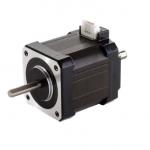
|
6 Wire 2 Phase Stepper Hybrid Motor Nema 17 Dual Shaft Stepper Motor |

|
2 Phase Single Shaft High Speed Stepper Motor Hybrid Nema 23 6 Wire Stepper Motor |
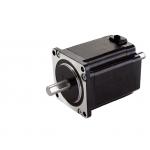
|
57AHS240 Hybrid Nema 23 Dual Shaft Stepper Motor Four Wires 2 Phase Stepper Motor |
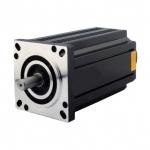
|
6 Wire Hybrid Three Phase Stepper Motor Nema 52 130mm 3130AHS3500 |
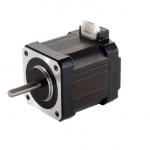
|
Hybrid High Speed Nema 17 Stepper Motor 6 Wire 2 Phase 42AHS031/043 |
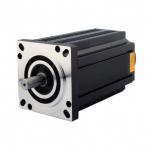
|
Hybrid 3 Phase Stepper Motor 130mm Nema 52 Stepper Motor 3130AHS2800 |

